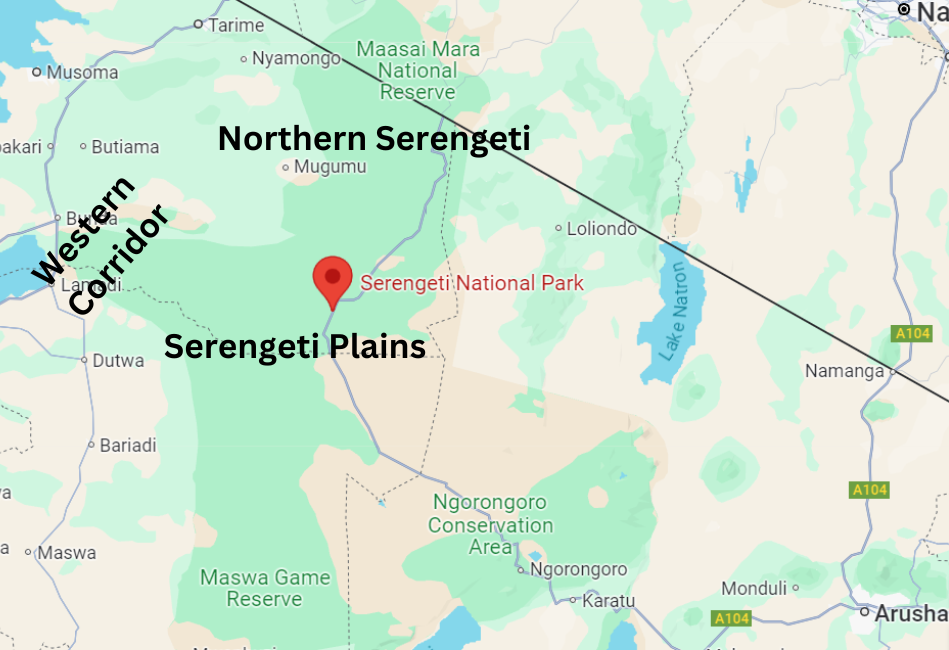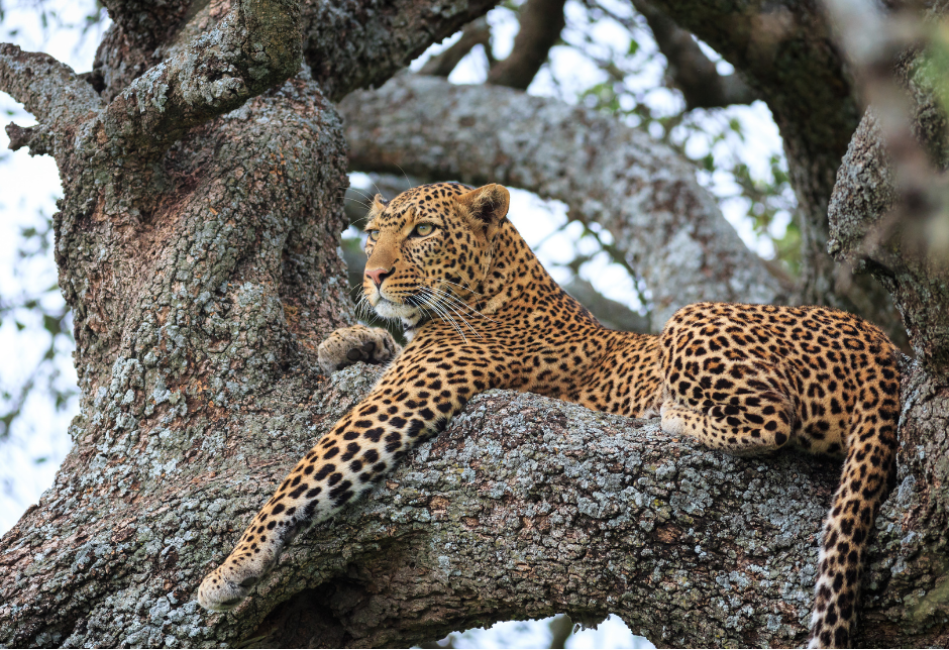Exploring Serengeti National
Introduction
Nestled in the heart of East Africa, the Serengeti National Park is one of the most iconic wildlife reserves in the world. Spanning approximately 14,750 square kilometers (5,700 square miles) in northern Tanzania, this park is renowned for its vast savannahs, abundant wildlife, and breathtaking landscapes. The Serengeti's name, derived from the Maasai language, means "endless plains," perfectly capturing the essence of this remarkable ecosystem. Let's go on a journey through the Serengeti, and explore its diverse wildlife, unique ecosystems, and the natural beauty that make it a must-visit destination for nature enthusiasts and adventure seekers.
A Brief History
The Serengeti's history dates back to ancient times when early humans roamed these lands. However, it was not until the early 20th century that the area gained international recognition for its extraordinary wildlife. In 1921, the British colonial administration designated the region as a game reserve to protect the diminishing populations of wildebeests and other animals from poaching. The park was officially established in 1951 and later designated a UNESCO World Heritage Site in 1981, ensuring its protection for future generations.
The Great Migration in the Serengeti
One of the most awe-inspiring events in the Serengeti is the Great Migration, often referred to as "The Greatest Show on Earth." This annual spectacle involves over 1.5 million wildebeests, accompanied by hundreds of thousands of zebras and gazelles, undertaking a perilous journey across the Serengeti in search of fresh grazing grounds and water. This epic migration is a continuous loop that spans over 1,000 kilometers (621 miles), with the animals moving from the Serengeti in Tanzania to the Maasai Mara in Kenya and back again.
The migration is driven by the seasonal rains and the availability of grazing land. From December to March, the southern Serengeti and the Ngorongoro Conservation Area become the calving grounds for wildebeests. During this period, thousands of calves are born each day, providing a feast for predators such as lions, cheetahs, and hyenas. By April, the herds begin their northward journey, crossing rivers and facing numerous challenges, including crocodile-infested waters and the ever-present threat of predators. The dramatic river crossings, particularly at the Grumeti and Mara Rivers, are a highlight for many visitors, showcasing the raw and unfiltered struggle for survival.
Diverse Ecosystems and Wildlife
The Serengeti's landscape is a mosaic of diverse ecosystems, each supporting a unique array of flora and fauna. The park can be broadly divided into three main regions: the Serengeti Plains, the Western Corridor, and the Northern Serengeti.

The Serengeti Plains
The Serengeti Plains are the heart of the park, characterized by endless stretches of grasslands dotted with acacia trees. This region is the primary calving ground for wildebeests and is home to large herds of zebras, gazelles, and other ungulates. Predators, including lions, cheetahs, and hyenas, thrive in this area, making it a prime location for wildlife viewing and photography.
The Western Corridor
The Western Corridor is a narrow strip of land extending towards Lake Victoria. Dense woodlands, riverine forests, and the Grumeti River characterise this region. The Western Corridor is famous for the dramatic river crossings during the Migration, where herds of wildebeests and zebras brave the crocodile-infested waters. The area is also home to the rare and endangered black rhino, which can occasionally be spotted in the dense thickets.
The Northern Serengeti
The Northern Serengeti is a more remote and less-visited part of the park, characterized by rolling hills, open woodlands, and the Mara River. This region is a crucial part of the Great Migration, as it serves as the gateway to the Maasai Mara in Kenya. The Mara River crossings in the Northern Serengeti are some of the most dramatic and challenging parts of the migration, attracting large numbers of tourists and photographers eager to witness the spectacle.
Iconic Wildlife of the Serengeti
The Serengeti is home to an incredible diversity of wildlife, with over 70 large mammal species and more than 500 bird species recorded in the park. Some of the most iconic animals that can be spotted in the Serengeti include:
Lions
The Serengeti boasts one of the largest lion populations in Africa, with an estimated 3,000 individuals. These majestic predators are often seen lounging in the shade of acacia trees or stalking their prey across the plains. The Serengeti's lions are famous for their role in numerous wildlife documentaries, showcasing their hunting prowess and complex social structures.
Elephants
African elephants are another highlight of the Serengeti, with herds frequently seen grazing in the woodlands and along riverbanks. These gentle giants play a crucial role in shaping the landscape, as their feeding habits help maintain the balance between grasslands and woodlands.
Cheetahs
Known for their incredible speed and agility, cheetahs are a common sight on the Serengeti Plains. These sleek predators are often seen resting on termite mounds or scanning the horizon for potential prey. The open grasslands provide an ideal hunting ground for cheetahs, allowing them to utilize their remarkable acceleration to chase down fast-moving antelopes.
Leopards
Leopards are elusive and solitary creatures, often found in the woodlands and along riverine forests. These stealthy predators are excellent climbers and are frequently seen lounging in trees during the day. The Serengeti's leopards are known for their adaptability, allowing them to thrive in various habitats across the park.
Rhinos
The Serengeti is home to both black and white rhinos, though they are much rarer and harder to spot. The Western Corridor and the Moru Kopjes area are known for occasional sightings of the critically endangered black rhino. Efforts to protect and conserve these magnificent creatures have been ongoing, with anti-poaching initiatives playing a crucial role in their survival.
Birdlife in the Serengeti
The Serengeti is a birdwatcher's paradise, with an astounding variety of bird species inhabiting its diverse ecosystems. From large raptors to colorful songbirds, the park offers endless opportunities for avian enthusiasts. Some notable bird species include:
Ostriches
The world's largest bird, the ostrich, is a common sight on the Serengeti Plains. These flightless birds are known for their impressive speed and powerful legs, allowing them to outrun many predators.
Secretary Birds
With their striking appearance and unique hunting style, secretary birds are a favorite among birdwatchers. These large birds of prey are often seen stalking through the grasslands, using their long legs to stomp on and catch their prey.
Vultures
Vultures play a vital role in the Serengeti's ecosystem, acting as nature's clean-up crew. Several species of vultures can be found in the park, including the white-backed vulture, Rüppell's griffon vulture, and the hooded vulture. These scavengers are often seen circling above carcasses, waiting for their turn to feed.
Flamingos
The alkaline lakes on the fringes of the Serengeti, such as Lake Natron, are home to large flocks of flamingos. These elegant birds are known for their vibrant pink plumage, which they acquire from the carotenoid pigments in their diet of algae and crustaceans.
Conservation Efforts and Challenges
The Serengeti National Park is a beacon of conservation success, but it also faces numerous challenges. Protecting this vast wilderness and its inhabitants requires continuous efforts and collaboration between governments, conservation organizations, and local communities.
Anti-Poaching Initiatives
Poaching has long been a significant threat to the Serengeti's wildlife, particularly for elephants and rhinos. Anti-poaching initiatives, including increased patrols, ranger training, and the use of advanced technology such as drones and GPS tracking, have been instrumental in curbing illegal activities. Community engagement and education programs have also played a crucial role in reducing poaching by fostering a sense of stewardship among local residents.
Habitat Protection
Preserving the Serengeti's diverse habitats is essential for maintaining the delicate balance of its ecosystems. Efforts to combat habitat loss include reforestation projects, controlled burns to manage grasslands, and measures to prevent encroachment by human settlements. These initiatives help ensure that the Serengeti remains a thriving sanctuary for its wildlife.
Human-Wildlife Conflict
As human populations grow and expand into wildlife territories, conflicts between people and animals have become more frequent. Livestock predation by predators and crop damage by herbivores can lead to retaliatory killings and increased tension between communities and conservation efforts. Implementing strategies such as predator-proof bomas (livestock enclosures), compensation schemes for livestock losses, and community-based conservation programs helps mitigate these conflicts and promote coexistence.
Tourism and Its Impact
Tourism is a vital source of revenue for the Serengeti and supports conservation efforts. Sustainable tourism practices, including limiting the number of visitors, enforcing strict guidelines for wildlife viewing, and promoting eco-friendly accommodations, are essential for minimizing the impact of tourism on the park.



